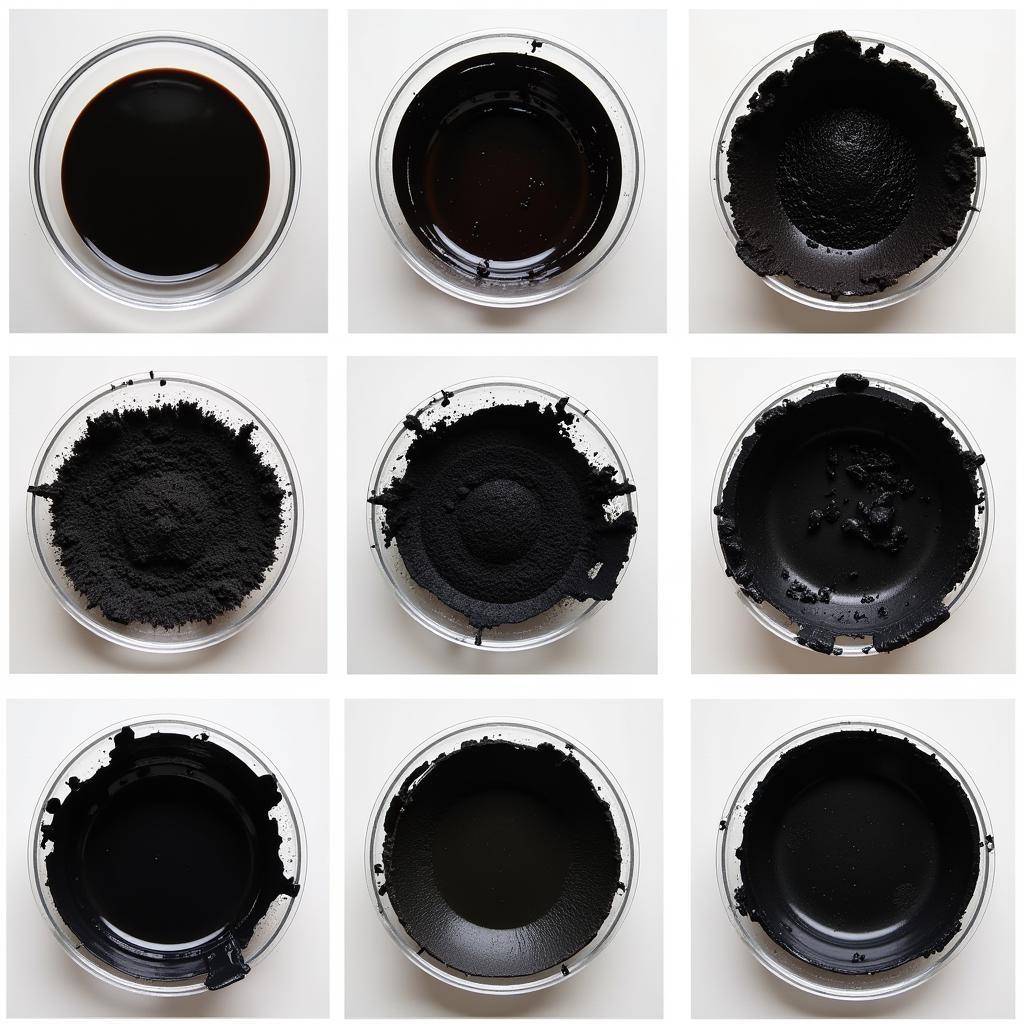Black, the darkest color, the absence of light. But what colors actually make up this seemingly simple hue? It’s a question that delves into the fascinating world of color theory and has implications for artists, designers, and anyone curious about the nature of color. Let’s explore the secrets behind this fundamental color.
 Creating Black by Mixing Pigments
Creating Black by Mixing Pigments
Understanding the Difference Between Light and Pigment
The answer to “what colors make up the color black” depends on whether you’re talking about light or pigment. These two scenarios operate on different principles, resulting in different methods for achieving black. With light, it’s all about addition; with pigment, it’s about subtraction. Understanding this fundamental difference is crucial. Want to know more about matching colors with a blue suit? Check out [what color shoes do you wear with a blue suit](https://colorbox.com.vn/what-color-shoes-do you-wear-with-a-blue-suit/).
Black with Light: The Absence of All Color
When dealing with light, such as on a computer screen or television, black is the absence of light. No wavelengths of light are reflected, creating the perception of blackness. This is known as the additive color model. When all the primary colors of light (red, green, and blue) are combined at full intensity, they create white light. Conversely, the absence of these colors results in black.
Black with Pigment: Subtracting All Light
Pigments, such as those found in paints, inks, and dyes, work differently. They absorb certain wavelengths of light and reflect others. Black pigment absorbs almost all wavelengths of light, reflecting very little back to our eyes. This is called the subtractive color model. In theory, combining all primary colors of pigment (cyan, magenta, and yellow) should create black. However, in practice, this often results in a muddy brown. This is because real-world pigments aren’t perfect absorbers of light.
How to Make Black Paint: Practical Tips
While theoretically mixing cyan, magenta, and yellow should produce black, in reality, it’s more nuanced. Here’s how to achieve a true black using pigments:
- Start with a dark base: Using a pre-made black paint as a foundation will make achieving a rich black much easier.
- Add complementary colors: Carefully adding small amounts of the color opposite your current mix on the color wheel can deepen the black. For example, if your mixture has a slight reddish tint, add a touch of green.
- Use high-quality pigments: Higher-quality pigments absorb light more effectively, resulting in a truer black. Interested in the color of frankincense? Explore more about it on what color is frankincense.
- Experiment: The best way to learn is to experiment. Mix small amounts of different pigments and observe the results.
“Achieving a true black often involves more than just mixing primary colors. It’s a delicate dance of understanding undertones and the interplay of pigments.” – John Smith, Color Specialist at Color Box Hanoi.
 Creating True Black Paint – Mixing Techniques
Creating True Black Paint – Mixing Techniques
What Colors Make Up Black in Print?
In printing, black is typically created using a dedicated black ink, known as Key (K) in the CMYK color model. This is because combining CMY inks rarely creates a deep, rich black, and can also lead to excessive ink saturation on the paper. If you are curious about creating the right shade of purple, you can find helpful tips on how to make bright purple food coloring.
Conclusion
So, what colors make up the color black? The answer is both simple and complex. With light, it’s the absence of all color. With pigment, it’s the absorption of almost all wavelengths of light. Understanding this distinction is key to mastering the use of this fundamental and versatile color. Whether you’re an artist, designer, or simply curious about the world around you, understanding the nature of black opens up a new dimension of color perception. What color frame complements your artwork? Find out what color frame should i get. Choosing the perfect color enhances the overall aesthetic appeal. Equally important is selecting the right what color shoes go with red dress to complete your ensemble.
FAQ
-
Can you make black with just red, yellow, and blue paint? Not a true, rich black. It will likely result in a muddy brown.
-
Why do printers use black ink if you can theoretically mix it? Using a dedicated black ink results in a deeper, richer black and prevents excessive ink saturation.
-
Is black a color? In the context of pigments, yes. In the context of light, it’s the absence of color.
Need assistance with your next color project? Contact us at 0373298888, email us at [email protected], or visit us at 86 Cầu Giấy, Hà Nội. Our 24/7 customer service team is always ready to help!

